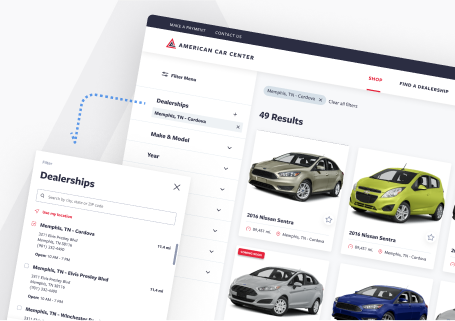Custom vs. Low-Code: Choosing the Right Path for Your Software
In today's blog post, we dive into the world of software development, specifically focusing on the choice between custom and low-code development. Join us as we explore the pros and cons of each approach and help you determine the right path for your software projects.

Sushmitha Diwakar

In today's blog post, we dive into the world of software development, specifically focusing on the choice between custom and low-code development. Join us as we explore the pros and cons of each approach and help you determine the right path for your software projects.
Custom Development: Empowering Tailored Solutions
Custom development involves building software applications from scratch using programming languages and frameworks. It offers the highest level of flexibility and customization, allowing developers to create tailored solutions that precisely meet a project's unique requirements. With custom development, every aspect of the software is meticulously designed and coded to ensure it aligns perfectly with the specific needs and objectives.
One of the critical advantages of custom development is its scalability. Custom-built applications can handle large volumes of data and complex business processes, making them suitable for enterprise-level projects. Moreover, custom development provides extensive integration capabilities, enabling seamless connections with existing systems and third-party APIs. This level of integration empowers organizations to streamline their operations and enhance data exchange between different systems.
Custom development requires more time compared to other development approaches due to the need for coding from scratch. This can extend the project timeline and delay the delivery of the final product. Skilled developers command higher rates, making it costlier for organizations with limited budgets. Ongoing maintenance and updates are also necessary to address issues, implement bug fixes, and incorporate new features, adding to the long-term cost and resource requirements.
Low-Code Development: Accelerating Application Delivery
On the other hand, low-code development is an approach that empowers citizen developers or non-technical users to create applications with minimal coding knowledge. It provides a visual, drag-and-drop interface and pre-built components, enabling rapid application development. With low-code platforms, users can quickly design workflows, define data models, and construct user interfaces, significantly reducing the time and effort required to create functional applications.
The primary advantage of low-code development lies in its speed and simplicity. It enables organizations to accelerate their application development process, enabling bubble or other low-code platform developers to build applications without relying on traditional coding methods. It is cost-effective, eliminating the need for extensive custom coding and reducing the demand for highly skilled developers.
However, low-code development may have some limitations. It may offer less flexibility regarding customization options, making it less suitable for complex or highly specialized projects that demand a high degree of customization. Scalability can also be a concern, as some low-code platforms may need help to handle large-scale or highly demanding applications. Furthermore, adopting a specific low-code platform may result in vendor lock-in, limiting the ability to switch platforms or migrate applications in the future. Finally, there may be less control over performance optimization, as low-code development abstracts away the underlying code, reducing the ability to fine-tune performance aspects.
In conclusion, both custom and low-code development have strengths and considerations. The choice between the two depends on project requirements, timelines, budget, available resources, and the balance between customization and speed-to-market.
Pros & Cons of Custom vs. Low-code Development
| Custom Development | Low-Code Development | |
| Pros | Flexibility and customization | Rapid application development |
| Scalability | Reduced dependency on coding | |
| Integration capabilities | Cost savings | |
| Performance optimization | Easier maintenance and updates | |
| Cons | Longer development time | Limited customization |
| Higher development cost | Potential scalability challenges | |
| Dependency on skilled developers | Vendor lock-in | |
| Maintenance and updates | Less control over performance optimization |
Please note that this table provides a general overview of the pros and cons and may vary based on specific circumstances and project requirements.
Custom Development Roadmap:
- Requirements Gathering: Collaborate with stakeholders to understand project objectives, user needs, and functional requirements.
- Architecture and Design: Design a robust system architecture and create detailed technical specifications.
- Development: Write custom code using programming languages and frameworks to implement the software application.
- Testing and Quality Assurance: Conduct comprehensive testing to ensure the application functions as intended and meets quality standards.
- Deployment: Prepare the infrastructure, configure servers and databases, and deploy the application in the desired environment.
- Maintenance and Support: Provide ongoing maintenance, bug fixes, performance enhancements, and user support to ensure the application runs smoothly.
Low-Code Development Roadmap:
- Requirements Gathering: Collaborate with stakeholders to gather project requirements, user needs, and desired outcomes.
- Platform Familiarization: Get acquainted with the chosen low-code development platform and its features, tools, and capabilities.
- Modeling and Design: Utilize visual interfaces to design the application's data model, workflows, and user interface.
- Configuration and Customization: Use drag-and-drop functionality and pre-built components to configure the application's logic and behavior.
- Integration: Connect the application with external systems or APIs using built-in connectors or custom integration options.
- Testing and Quality Assurance: Validate the application's functionality and perform necessary tests to ensure reliability and user satisfaction.
- Deployment: Publish the application to the desired environment, which may involve cloud-based hosting or on-premises deployment.
- Maintenance and Support: Continuously monitor and maintain the application, address bugs, implement updates, and provide user support using the low-code platform's tools and features.
It's important to note that the specific steps and their order may vary depending on the project and organization.
The comparison shows the effective timeline difference between custom and low-code development 9 Weeks ‘vs.’ 16 Weeks.


Conclusion:
Choosing the right development approach is crucial for the success of your software projects. Custom development offers unparalleled flexibility and customization, making it ideal for complex, specialized projects requiring complete control. On the other hand, low-code growth accelerates application delivery, providing speed and simplicity for projects with time constraints or non-technical user involvement.
Ultimately, the choice between custom and low-code development depends on various factors such as project requirements, timelines, budget, available resources, and the balance between customization and speed-to-market. Careful evaluation of these factors will help you make good decisions.

UX best-practices consultation!
Review your product with our industry leaders today at no cost.
Table of Contents

UX best-practices consultation!
Review your product with our industry leaders today at no cost.




